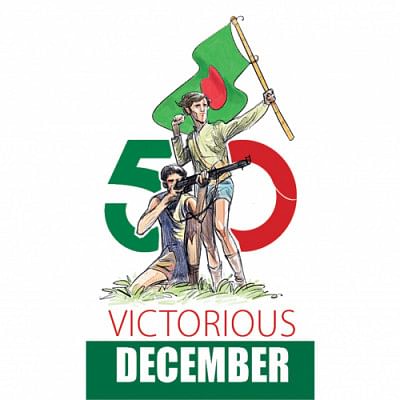It arrived a day later

One day after the rest of the country, Khulna was freed on December 17, 1971.
On this day, the Pakistani occupation forces surrendered to the allied forces.
After freedom fighters had captured most of the Pakistani army and their local collaborators' camps in the district, by December 16, it was only a matter of time before their last bastion Khulna city was freed.
Many of the collaborators' camps, including Forest Ghat, Gallamari Radio Station, Khulna Lion's School, PMG Colony, Khulna Shipyard, Tootpara, Boyra Fire Brigade Station, Wapda Building, and more were still active. They served not only as the collaborators' bases, but also places for killing and torturing Bangladeshis.
"Khulna was like a capital of the Razakar. Jamaat-e-Islami leader AKM Yusuf was their founder and head of the peace committee in Khulna," said SM Babar Ali, second-in-command of the Mujib Bahini (BLF) in Khulna during the war.
On this day in '71, the freedom fighters started entering Khulna city following different routes, including Gallamary, Rupsha Ghat area via Senerbazar-Razapur, Crescent Jute Mill, Mongla, Batiaghata, and Phultala areas.
Talking to The Daily Star, Sk Quamaruzzaman Tuku (79), Commander of the Mujib Bahini, reminisced the events of the day.
"We got news from our sources that most areas of the country had already achieved freedom before December 16. Then, on the day, we heard over the radio that the Pakistani army had surrendered everywhere, except for Khulna," Tuku said.
"This made our blood boil. We were determined to free our city as soon as possible."
Now district counsel chairperson of Bagerhat, Tuku recounted two battles that took place on the day. "One was in Shiromani area, the other at Khulna Shipyard area," he said.
"For the prior two days, the Pakistani forces were giving it their all," said SM Babar Ali, the second-in-command of the Mujib Bahini. "They were armed with several regiments of artillery, infantry and armoured divisions, including six tanks, in Shiromani."
"There used to be a cantonment at Shiromani. Our battle grew fiercer there," he continued. "The occupation forces used modern weapons, including anti-aircraft machine guns, mortars and rocket launchers."
The freedom fighters eventually came out on top of the skirmish. A total of 200 Pakistani soldiers surrendered with their weapons, while the collaborators fled.
The other battle at Khulna Shipyard area bled heavily. It began with the Pakistani forces ambushing a launch that was carrying freedom fighters along the Rupsha River. The liberation forces won, but at the cost of one freedom fighter who embraced martyrdom. Sixteen others were also injured.
Finally at 10:30 in the morning, the freedom fighters marched towards Khulna Circuit House grounds where the flag of an independent Bangladesh was raised by Major (Retd) Joynul Abedin and Gazi Rahmatulla Dadu.
Another flag was hoisted in Shaheed Hadis Park by the freedom fighters.
Sector-9 Commander MA Jalil later handed over several hundred prisoners of war, including commander of the Pakistani forces Brig Hayat Ali Khan, to General Dalbir Singh, chief of the Indian forces in the western region. The handover took place in Khalishpur.

 For all latest news, follow The Daily Star's Google News channel.
For all latest news, follow The Daily Star's Google News channel. 




Comments